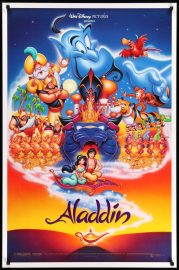Writing induces clarity. It’s a bit like teaching. If you want to explain a subject well to students, you have to be very clear about the concepts yourself. The other advantage of writing over a period of time is you can clearly see how your thoughts have changed over time. Or, as in my case, how I was wrong.
In the review of the movie Kabali, I wrote this :
One thing I liked about Kabali was : this was the first time I watched a Tamil movie in original with English subtitles in Maharashtra. (I understood only two words - sappadu (eat) and po (go)). I hope this trend continues and we get to watch movies from all over India in their original languages. I hate dubbed movies. You lose the voices, tones, inflections of the actors : something which they have spent years perfecting. It's like losing half of the screen. The dubbed voices can never convey the right emotion even half as well as the actor. Give me subtitled movies any day. I want to hear the original Manipuri or Swahili.Now in my defense (Kinda fun accusing yourself in first paragraph and defending in the next), this is not totally wrong. I do hate most dubbed movies, but not all of them. I realized this when I watched the Hindi trailer of Deadpool 2 where the main character has the voice of Ranveer Singh. You see, when the dubbing is done by an accomplished actor, comedian or by a voice artist – in short, someone who knows how to use her voice – then the movie becomes a completely different object. I have not seen Deadpool 2 (Hindi) yet but I am sure I am going to enjoy it.
Under such circumstances of course, I love dubbed movies. I am also puzzled though. In case of Deadpool 2 for instance, the characters are American but they speak very good Hindi. In fact, the language rendering is perfectly Indian with Hindi idioms/phrases and so on. And just in my last post, I said that I liked The Longest Day because the characters spoke their own language – French, German etc. How can I justify using two yardsticks for two movies?
I think the answer lies in the genre of the movie. For serious movies like The Longest Day, there is not much latitude to improvise on the language of the characters. But for lighthearted movies like Deadpool 2, the need for authentic environment of the characters takes a backseat to conveying the emotion and creating similar comic punches.
And then I remembered, I have another example of a dubbed TV series that I loved more than the original one.
Many years back, when I first watched the cartoon series Aladdin, it was in Hindi. It was so beautifully rendered that I never thought about checking it out in the original English. Prince Aladdin’s voice was Sonu Nigam, the Genie was the amazing voice artist Chetan Sashital and the parrot’s voice was Rakesh Bedi. Well known singer and musician Shankar Mahadevan also lent his voice to one of the characters. My favourite was of course, the Genie. Since he keeps on changing his character, this provided a unique opportunity for Chetan to show his creative genius. He must have impersonated every actor in Bollywood, from Dharmendra to Sanjeev Kumar; every regional language from Punjabi to Bihari and their dialects; and many other characters like a TV reporter or a radio announcer. By the way, Sonu would also have been brilliant as Genie, he is a master of impersonations. And the parrot also had an interesting personality – that of a Mumbai gangster who speaks Bambaiyya Hindi. This combination made Aladdin one of the most enjoyable series to watch.
Much later I watched the original Aladdin. I did not enjoy it as much as the Hindi version. This was sad because the genie’s voice was none other than the comic genius Robin Williams. Why did this happen? Answer is quite simple. All the intonations, accents, inside jokes and impersonations that Robin so brilliantly used were quintessentially American. Not only that, the Genie changes characters so fast that sometimes he begins a line with one character and ends with another. It is impossible to get all that unless you have lived in America all your life and know the culture inside out. That is why special credit must go to the creators of the Hindi version. It is very difficult to adapt/translate humour from one language to another. Creating the Hindi version must have been a lot of hard work, both for the writers Piyush Pandey, Prasoon Pandey and the dubbing artists.
Another example of a brilliant adaptation is Kamal Hassan’s Chachi 420 which is inspired by Mrs. Doubtfire. Again, I like this version just a little bit more than the original Robin Williams’ version and the reason is the same. The Indian adaptation by Kamal Hassan (screenplay) and Gulzar Saab (dialogues and lyrics) is spot on, backed by fresh humour and some fantastic acting performances.
Hollywood animation movies have always been exceptional in their voice rendering. Everyone from Woody Allen to Jerry Seinfeld have lent their voices to animation movies. That’s what makes these movies so entertaining. From Bugs Bunny and Donald Duck to Shrek and Madagascar, it was the unique voices that made the characters so memorable. An accomplished actor can give so much to the character just through her voice. I do hope more Bollywood actors, singers and comedians would consider lending their voices to movies, especially, animated movies. Our kids deserve the best.


